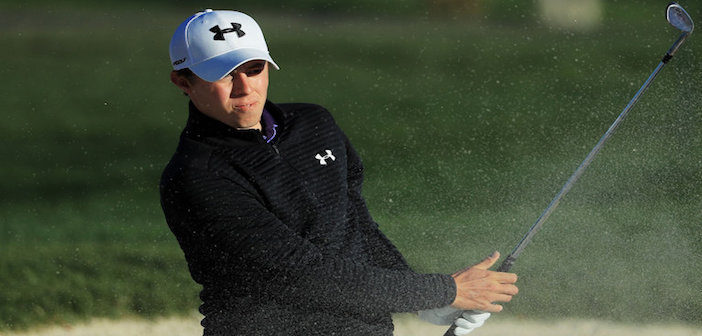Understanding golf betting odds isn’t just about picking a name and hoping for a strong finish. It requires interpreting how sportsbooks set their numbers, what each market means, and where sharp value can be found. With more tournaments on the calendar and sharper oddsmakers than ever, successful golf wagering demands strategy. Whether you're backing a pre-tournament favorite, spotting a longshot with momentum, or isolating value in head-to-head round matchups, clarity on how golf odds work is essential. This guide breaks down the core formats, explains how prices are calculated, and offers insight into identifying profitable opportunities.
How Golf Outright Odds Work
Outrights are the most common form of golf betting. When you wager on an outright, you're picking the winner of a full tournament—usually across four rounds. Prices are typically presented in American odds format. For example, a favorite might be listed at +800, meaning an $100 bet returns $800 in profit if that golfer wins.
To understand outright markets, you first need to grasp how golf betting odds are set. Sportsbooks weigh each player’s recent form, course history, and projected field strength before assigning prices. Unlike team sports, golf features a large field. It's not uncommon to see 100 or more players listed before a tournament. That volume of participants means even elite players rarely drop below +500 to win. The implied probability of these odds is often much lower than their perceived likelihood, creating potential for both risk and reward.
Pay attention to how odds shift after each round. If a player opens at +5000 and shoots 65 on Thursday, their price may collapse to +1200. Understanding when to enter an outright market—before or after the first round—can impact your edge.
The Mechanics of Each-Way Bets
Each-way betting adds protection to outright picks. This bet splits your stake into two parts: one portion goes to win, and the other to finish within a set placing range (usually top five or top eight). If your golfer places but doesn’t win, you still receive a payout at a fraction of the original odds.
For instance, a $50 each-way bet on a +2000 golfer might return full odds for a win and one-fifth of the odds for a top-five finish. If the player finishes third, the win portion loses but the place portion pays. Each-way bets are popular in deep fields or when backing inconsistent golfers with high ceilings.
Terms vary by sportsbook, so it's worth comparing multiple options. Some books may offer enhanced place terms during major tournaments, which significantly affects the long-term value of each-way strategies.
Round Matchups: A Strategic Focus
Round matchups pit two or more players against each other for a single round. The goal is simple: pick the player who posts the lowest score among the group that day. Unlike outrights, round matchups are binary—your golfer either wins the matchup or doesn’t. There are no prizes for finishing close.
These markets often feature closely priced players. Odds might range from -110 to +100 for each side. Because of this tight pricing, value lies in research. Pay attention to tee-time pairings, course conditions, and player form. A golfer with early morning tee times might benefit from softer greens and less wind. If that player is priced evenly against someone teeing off in the afternoon, the edge is clear.
Round matchups also reward data-driven bettors who track strokes-gained metrics, short game tendencies, and past performance on specific courses. Consistency and course fit matter more here than long-term win rate.
Live Betting and Adjusting Expectations
Golf is ideal for in-play betting. Odds update after nearly every hole, reflecting momentum shifts, bogeys, and birdie runs. A player who double-bogeys early might drift from +1000 to +5000 within minutes. If they recover quickly, there’s potential to lock in value on the rebound.
To take full advantage of in-play markets, it helps to stay updated on the latest golf news. Whether it’s a mid-round injury, a weather delay, or a change in course conditions, even small factors can influence how a player performs—and how sportsbooks adjust their lines. If you’re wagering live, that context can be the difference between a smart entry and a costly misstep.
Live betting also allows you to hedge. If you’ve backed a longshot pre-tournament and they enter the final round with a narrow lead, you might choose to wager on a trailing favorite to protect your position.
The key to live betting is timing. Don’t overreact to one missed putt or one hot streak. Look for stretches in the course where players tend to struggle or score. Use that context to time your entries.
Also, be aware of delays. Weather can alter pace and strategy. If you're wagering live during rain delays or wind gusts, expect volatile movement in both player performance and sportsbook lines.
Top Finish and Group Markets
Top finish bets let you back a golfer to finish in the top five, ten, or twenty. These are useful when you like a player’s chances but don’t trust them to win. Odds are shorter than outrights, but success is more likely. For instance, a consistent player with limited winning history might be +3500 to win, but +400 for a top ten.
Group markets, meanwhile, divide the field into small clusters—usually four to six golfers—and offer odds for each to finish best in the group. These bets remove the need to worry about the entire field and instead focus on head-to-head performance within a controlled subset. This can be valuable when one player is mispriced compared to others with similar profiles.
When reviewing group markets, consider course fit and recent trends. If you find one golfer in poor form priced equally with another who thrives on similar layouts, you may be looking at an edge that sportsbooks haven’t fully priced in.
Bringing It All Together
Golf betting rewards preparation and timing. Whether you're placing an outright bet before Thursday’s tee-off or jumping on a live price after a late eagle, understanding the structure behind each market lets you make better decisions. Watch how odds shift. Compare terms across books. Think in probabilities, not just potential payouts. In a game where one hole can change everything, clarity is your biggest edge.




